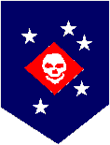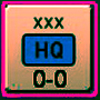mcv
Posts: 20
Joined: 7/14/2008
Status: offline

|
quote:
ORIGINAL: panzers
Well, it's like I said: I have read the manual twice, played the tutorial 3 times and played all four training games with the naval one 3 times, so I am aware of all what you guys are saying so I think I have my answer: maybe I do know how to play the game. I just haven't gone beyond the training and tutorials yet and it seems as though those are very basic and generic scenerios and they don't seem to offer the bells and whistles that come with a regular game, so I will go on to a regular game now. I'll keep you posted
The best way to learn this game is to play it. I played it before reading the manual, played the tutorial once, and never played any other training scenario. What did help me immensely, though, was the blitzkrieg staff academy for pacifists. It's actually not all that well written, but it explains a couple of subtle yet vital concepts of this game, and helps you get started in the "russia 1941" scenario.
I messed about a bit with the first turn of that scenario, then played a couple of quick random scenarios to get the hang of it, and then returned to russia '41, and beat the crap out of the AI. Now I'm playing a "World at War" scenario, and I'm still learning new stuff.
Don't expect to grasp every part of this game all at once. Naval operations, paradrops, supply drops to units that are out of supply, there's lots of stuff in this game that you're not going to need in your average game. Until recently, I didn't even know it was possible to upgrade existing subformations.
Focus on the basics first:
* How to move, how to attack from several directions at once, how to do artillery, air raids and shore bombardments.
* Create new units (HQs or formations)
* Production.
* Buy new tech. (Build political points, go to the tech screen and buy new tech.)
* How to organise your command structure properly to make supply, strategic movement and commanding attacks as easy as possible.
That last one is the biggest one, and the least trivial for beginners. Here's some advice:
* Make one HQ your "Supreme HQ". It stays in some central location in your empire. This will be the only top HQ you have; all others should have a an HQ superior to them (often this one or one directly below it). Send all supplies to the main HQ, and from there it will automagically be distributed to all sub-HQs that are in supply-range.
* All combat formations belong to a local command HQ. The command HQ needs enough staff to command all it's units (keep staff above 100%), and it needs to be close to the units it's commanding.
* If the units under a command HQ get too spread out, transfer some to another HQ, or create a new HQ and transfer some of your staff there.
* If a command HQ gets out of range of the supreme HQ, create an intermediary supply HQ. If the supply HQ has the supreme HQ as its HQ and is in supply range, and the command HQ has the supply HQ as superior and is within supply range of that, then supply will still happen automatically.
* Keep lots of transport capacity in your HQs. Usually trucks, trains in "world at war" scenarios, cargo ships for coastal HQs, and ocasionally transport planes. Transport capacity makes it easy to transfer subformations from one unit to another, or use strategic movement to get a unit to the front quickly.
I probably missed some things, but the important part is to play around with these. Try new things, learn new approaches, etc. There will be things you'll do the wrong way for a while. Originally, I did naval invasions by making a unit with cargo ships and land units, moving to the island I want to invade, create a new unit there, transfer the land subformations to the new unit, and next turn, it steps on land. Then I learned to transfer the cargo ships to the new unit so the land unit could land on the same turn. And only after that did I leanr the proper way: use the "load another unit on this unit" button. I knew there had to be a better way.
Paradrops also took some getting used to. And sometimes I still don't know if I should have transports and cargo ships in an HQ for strategic movement and transfers, or in a seperate unit for movement by hand.
This game is a larning process. It helps a lot if you enjoy learning, experimenting, and figuring stuff out for yourself. And if you do, write an online strategy guide to help other newbies out.
|
 Printable Version
Printable Version





















 New Messages
New Messages No New Messages
No New Messages Hot Topic w/ New Messages
Hot Topic w/ New Messages Hot Topic w/o New Messages
Hot Topic w/o New Messages Locked w/ New Messages
Locked w/ New Messages Locked w/o New Messages
Locked w/o New Messages Post New Thread
Post New Thread